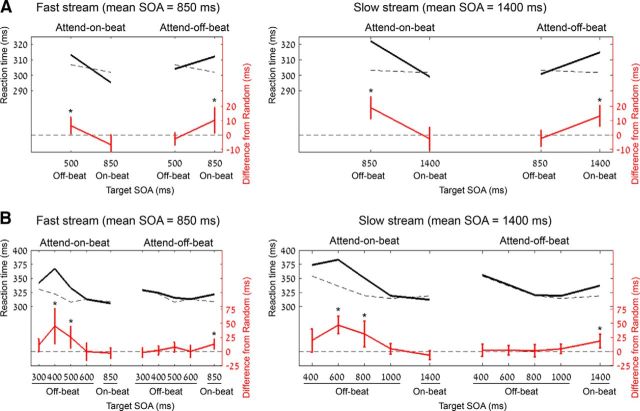Figure 2.
Behavioral consequences of shifting resources from rhythm-on-beat times to off-beat times. A, Experiment 1 (fixed off-beat time): mean reaction times for fast-stream (left) and slow-stream (right) trials at on-beat and off-beat target SOAs, in the three experimental conditions. Black lines represent reaction times in the attend-on-beat and attend-off-beat conditions; broken gray lines represent the results of the random condition, which was used as a reference for both the attend-on-beat and attend-off-beat conditions. Red lines represent differences between each rhythmic condition and the corresponding random condition. B, Mean reaction times in Experiment 2, in which off-beat times were jittered, for fast-stream (left) and slow-stream (right) trials at on-beat and off-beat target SOAs, in the three experimental conditions. The color scheme is the same as in A. For both experiments, error bars on red lines represent 95% confidence intervals for the difference. Stream SOA, mean interstimulus interval of the white stimuli stream; Target SOA, time (in ms) from the onset of the last white stimulus of the stream to the green target onset. Within each panel, significant differences (p < 0.05) from the corresponding random conditions are marked with an asterisk.

